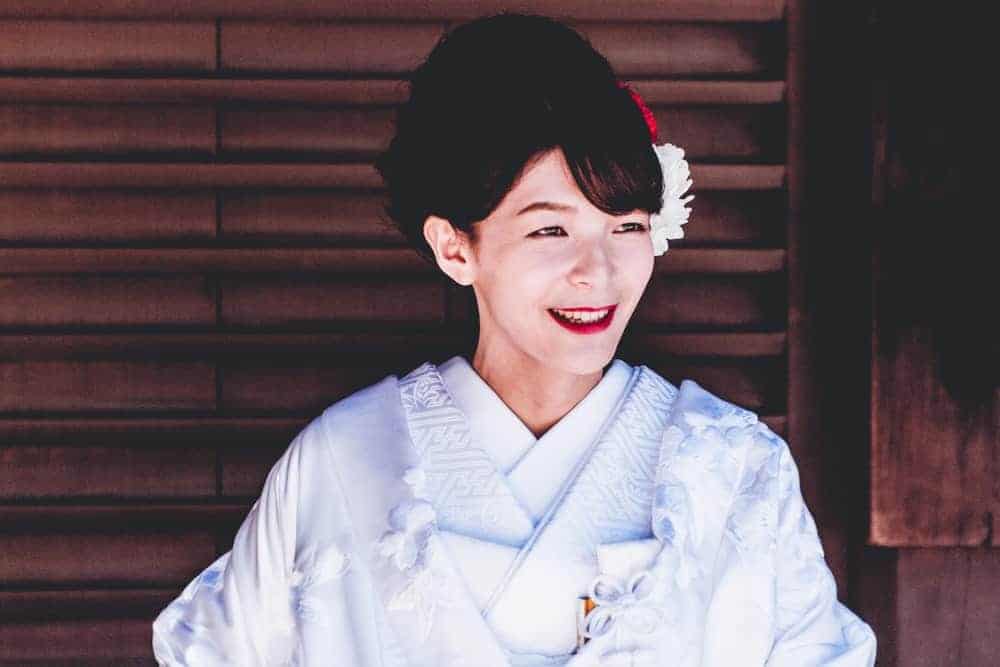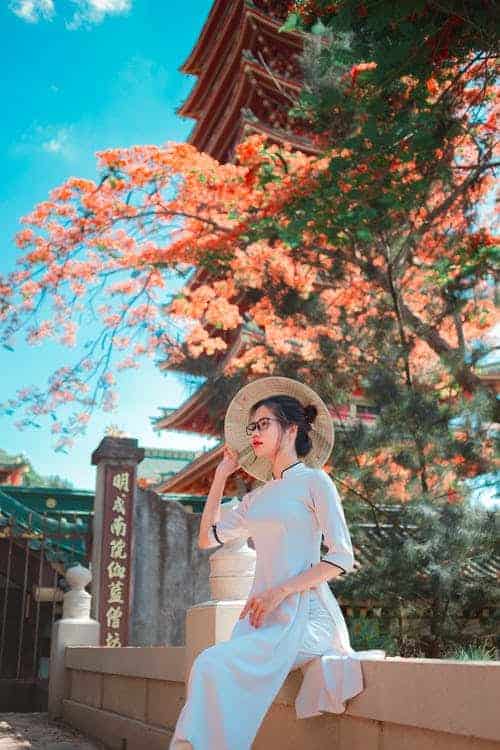Are you wondering what different types of women in Japan are called? If yes, I’ll tell you all types with detailed meanings in this article!
Minato-ku Joshi, Himono onna, Age-Man...If you’ve heard or seen these terms on social media or in real life, you might have wondered why are these repeatedly used for women in Japan, right?
Well, you’re right. Here I’ll give you a glimpse of types of women in Japan, why they are called what they’re called and the view of Japanese society as a whole.
What are the different types of women in Japan?
The different types of women in Japan are Age-man & Sage-man, Bari-Kyari & Yuru-kyari, Yochien-mama, Himono-onna and Minato-ku joshi.
If you’ve been in Japanese society, I’m sure you might have heard someone say, “She’s a ninkushoku-joshi who doesn’t care if a man has a wife or a girlfriend, she just goes with him” or maybe “I was a bari- kyari before I got pregnant”.
Well, the list to this is endless. These are the names to call the types of women in Japan which are imbibed in their culture. Japanese men and women both like to categorize everyone based on their personalities, actions, behaviors as well as lives!
But now you must be wondering..
Why does Japan have so many labels?
Japan has so many labels probably because of the important of wa (和, group harmony) in Japanese societies. They believe that everyone should belong, conform, be dependent and responsible towards the group and it’s members.
I believe this is the main reason there are so many categories for women. In Joshi-kai (女子会women get-together)- you’ll hear a lot of women talk about different types of women in Japan over and over.
Okay, let’s move ahead with the different phrases, terms or types of women in Japan. Some of the names have quite a history but still used commonly in everyday life while others might have appeared in social media or magazines in recent years.
Types Of Women In Japan
‘Age-man’ (アゲマン) & ‘Sage-man’ (サゲマン)
Lucky or unlucky for your partner?
“Age-man” (アゲマン) term for women became popular in the early 1990s when the movie of the same name was released directed by Juzo Itami became a blockbuster in Japan.
It was called “ Tales of a Golden Geisha” in English and was a comedy movie that told the role of the women who brought luck to men with whoever she was involved with. Age came from the verb ageru that means “to bring up” or “to rise”- in this case, it was luck!

The term Man in Age-man is highly debated, however, these two explanations are quite popular:-
- Man in Kanji is written as “間” that usually means time, interval or pause but also has the meanings- luck, charm, opportunity and serendipity.
- Man is also a shortened form of a cuss word, quite similar to the English c-word.
If a woman is called Age-man, she is being referred to as a lucky charm and seen as someone who brings good luck to her significant other. By her side, the man is always motivated or achieves success such as a pay-raise or promotion.
On the other hand, “Sage-man”, the word sage comes from the term sageru which means to “bring down” or “to lower”. She brings bad luck to her man and drags him down- she might be the reason for his failures and difficulties in life as she enters.
- Related: Ways to Say Woman In Japanese
‘Bari-Kyari’ (バリキャリ) & ‘Yuru-Kyari’ (ゆるキャリ)
Working lady or homemaker?
Earlier, there used to be two categories separating the types of women- Sengyo-shufu (専業主婦) meaning full-time housewives and career-oriented women (キャリアウーマン).
However, these days, more and more women have moved into the workforce- especially working mothers. There are these terms to address women- Bari-kyari and Yuru-kyari.
The word “bari” in Bari-kyari (バリキャリ) comes from baribari which is meant to describe someone who works very hard or something extremely energetic. Kyari is short for career women.

The term bari-kyari is basically to refer to a woman who is focused to make her career solid, someone who values being successful and leading a productive personal life as well.
On the other hand, in Yuru-Kyari (ゆるキャリ), yuru comes from the term yurui which means laid back or relaxed, quite the opposite of bari-kyari. Women in this category do not prioritise work and are rather into their family, hobbies or personal interests. They work at their own pace.
Many Japanese women shift from Bari-kyari to Yuru-Kyari once they are pregnant or have a child to look after. This is because women in Japan devote more time to taking care of children and raising them as compared to men.
Related: When in Japan, don't tip. Here's why!
‘Yochien-mama’ (幼稚園ママ)
The high class housewife
There’s another upgrade that I noticed in the big category of Sengyo- shufu- “Yochein-mama”. This was first noticed by me when I was going through a fashion magazine for women in their 30s-40s.
It is mostly used for women who are married to a rich and successful man, have children and are living a fulfilling life. “Yochien” actually means kindergarten. It is used to refer to women whose kids attend kindergarten.
The child here goes to a kindergarten and not hoikuen (daycare). This is because yochien typically starts from 9 am and ends at 2 pm and is not really working-mother-friendly.
Sending kids to kindergarten is something that a full-time housewife would do. Hence, yochien mama is a term for them. It is a more fashionable term for Sengyo-shufu as this has become quite old fashioned.
‘Nikushoku- joshi’ (肉食女子)
Casual romantic woman
Nikushoku-joshi term was first given by the famous columnist, Maki Fukasawa in 2006. It literally means “carnivorous girl”. It is usually used to refer to a girl who actively pursues a romantic relationship and isn’t afraid to make the first move.
They are sexually open and aggressive. They are not afraid to have sex with men before going through the whole “asking out on a date” situation.

Nikushoku-joshi was coined to actually use as an antonym to soshoku-danshi, a “herbivorous boy”. The type of men who fit into this category was obviously innocent, not really masculine or manly and do not want to pursue any kind of romantic relationships.
They do not tend to have high sexual drives and prefer spending time with their male friends rather than females. Afterall, opposites attract so herbivorous boys and carnivorous girls make a great couple. Nikushoku- joshi is one of the widely known types of Japanese women.
‘Himono-onna’ (干物女)
Being Alone means happiness
Quite opposite to the meaning of Nikushoku-joshi is Himono-onna (干物女). Himono-onna’s actual transliteration is “dried fish women”. This term was first seen in a Japanese manga popula in the 2000s called “Hotaru no Hikari''.
This term was used for the protagonist who was not interested in seeking any romantic relationships and would spend time alone at home in pyjamas, reading manga, drinking beer or sleeping.
A lot of female readers find themselves similar to her and the term just happens to be stuck around till today. It is now used to refer to single women in their 30s who have a dry love life, are not bothered about relationships and prefer being at home.
‘Minato-ku joshi’ (港区女子)
Gorgeous ladies looking for handsome high-spec guys
Minato-ku joshi (港区女子) has gained popularity in the recent years. It is used for ladies who are in their early 20s, mostly university students who love spending time in Minato Ward- one of the most expensive places to live in Japan.
By Minato Ward- I’m just pointing out the affluent neighbourhood where the high spec, rich, well educated, good-looking men who earn good money, such as businessmen, doctors or elite salarymen live who party almost every night.

Minato-ku Joshi’s sole motive is to be around these men, lure them into getting gifts like expensive jewelry, bags, , free fine-dine restaurant dinners or celebrity connections.
Many Minato-ku joshi are also kirakira joshi (キラキラ女子), women who are smart, glittery and glamorous, rich, well-educated and have a successful career.
"Hikikomori" (引きこもり)
"Hikikomori" (引きこもり) is a Japanese term that refers to a social phenomenon where individuals, typically adolescents or young adults, withdraw from social interactions and isolate themselves for an extended period, often in their own homes or rooms. The term "hikikomori" can be translated as "pulling inward" or "being confined."
The hikikomori phenomenon gained significant attention in Japan in the late 1990s and early 2000s, where it was initially recognized and studied.
Iyashi-kei joshi (癒し系女子)
"Iyashi-kei joshi" (癒し系女子) is a Japanese term that roughly translates to "healing-type girl" or "soothing girl" in English. It refers to a particular type of female personality or aesthetic trend in Japanese popular culture. The term gained popularity in the 2000s.
"Iyashi-kei" combines the word "iyashi" (癒し), meaning "healing" or "soothing," with "kei" (系), which denotes a particular style or type. "Joshi" (女子) simply means "girl" or "young woman."
An "iyashi-kei joshi" is often portrayed as someone with a gentle, kind, and nurturing demeanor. They are seen as providing emotional comfort and a sense of tranquility to others.
This concept is prevalent in various forms of media, including anime, manga, and advertising, where characters with these qualities are depicted as soothing and emotionally supportive figures.
All types of women in Japan are loved!
These are just some of the “labelled” types of women in Japan as most of the Japanese societies prefer labelling their members. These are some colloquial ways to address types of women in Japan.
So the next time you’re in Japan, make sure you use the right term for each woman you meet and make sure you offend no one!




